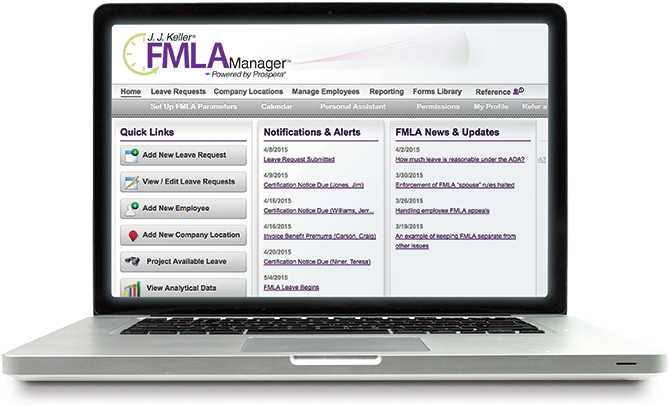FMLA Articles
The risk of not checking an employee’s FMLA eligibility
Key to remember: Before giving an employee an eligibility/rights and responsibilities notice, make sure the employee actually meets the eligibility criteria.
Applies to: All public employers and private employers with 50 or more employees.
Impact to customers: After reading this, customers may more carefully review whether an employee meets the eligibility criteria and avoid related issues.
Marcus was up to his eyeballs reviewing and revising return-to-work policies when Kanya’s request for FMLA came in. Marcus quickly provided Kanya with the FMLA paperwork, including an eligibility/rights and responsibilities notice indicating that she was eligible.
A few weeks later, when things had calmed down, Marcus was looking over Kanya’s FMLA information, and he realized that she had worked for the company for only 10.5 months, not the required 12 months. This meant that she wasn’t really eligible for FMLA leave. Unfortunately, she had already begun her FMLA leave.
Marcus wondered if he could rescind the eligibility determination and stop applying the FMLA protections going forward. He then wondered if he could retroactively deny FMLA protections to Kanya’s entire leave. Of course, this could lead to Kanya’s termination for taking unprotected leave.
The FMLA regulations indicate that, within five days of when an employee gives notice of the need for leave, employers are to determine whether or not the employee is eligible for FMLA leave and give the employee an eligibility/rights and responsibilities notice. The employee needs to have worked for the company for at least 12 months, worked at least 1,250 hours in the 12 months before leave is to begin, and work at a site with at least 50 company employees within 75 miles.
The regulations do not, however, indicate what an employer is to do if it makes a mistake in determining whether or not an employee is eligible. Some courts have provided some insight.
Of course, the options will depend upon the specifics involved in each situation. If an employer misrepresents an employee’s eligibility, it will not be able to use the fact that the employee is actually not eligible as a defense if the employee can show the following:
- The employer misrepresented the employee’s FMLA eligibility,
- The employee reasonably relied on the misrepresentation, and
- Relying on the misrepresentation resulted in harm to the employee.
In our opening story, if Marcus were to terminate Kanya because she took time off for what Marcus thought was unprotected leave, she could show the above three elements. Marcus told her, in the eligibility notice that she was eligible (misrepresentation); she relied on this misrepresentation (she took the leave), and in doing so, suffered a termination (harm).
The best defense, however, is a good offense, and getting the eligibility determination right can help keep an employer out of court. Training supervisors and managers to avoid inappropriately informing employees that their absence will be protected by the FMLA can also help.
You may also enjoy the following articles:

The J. J. Keller FMLA Manager service is your business resource for tracking employee leave and ensuring compliance with the latest Federal and State FMLA requirements.